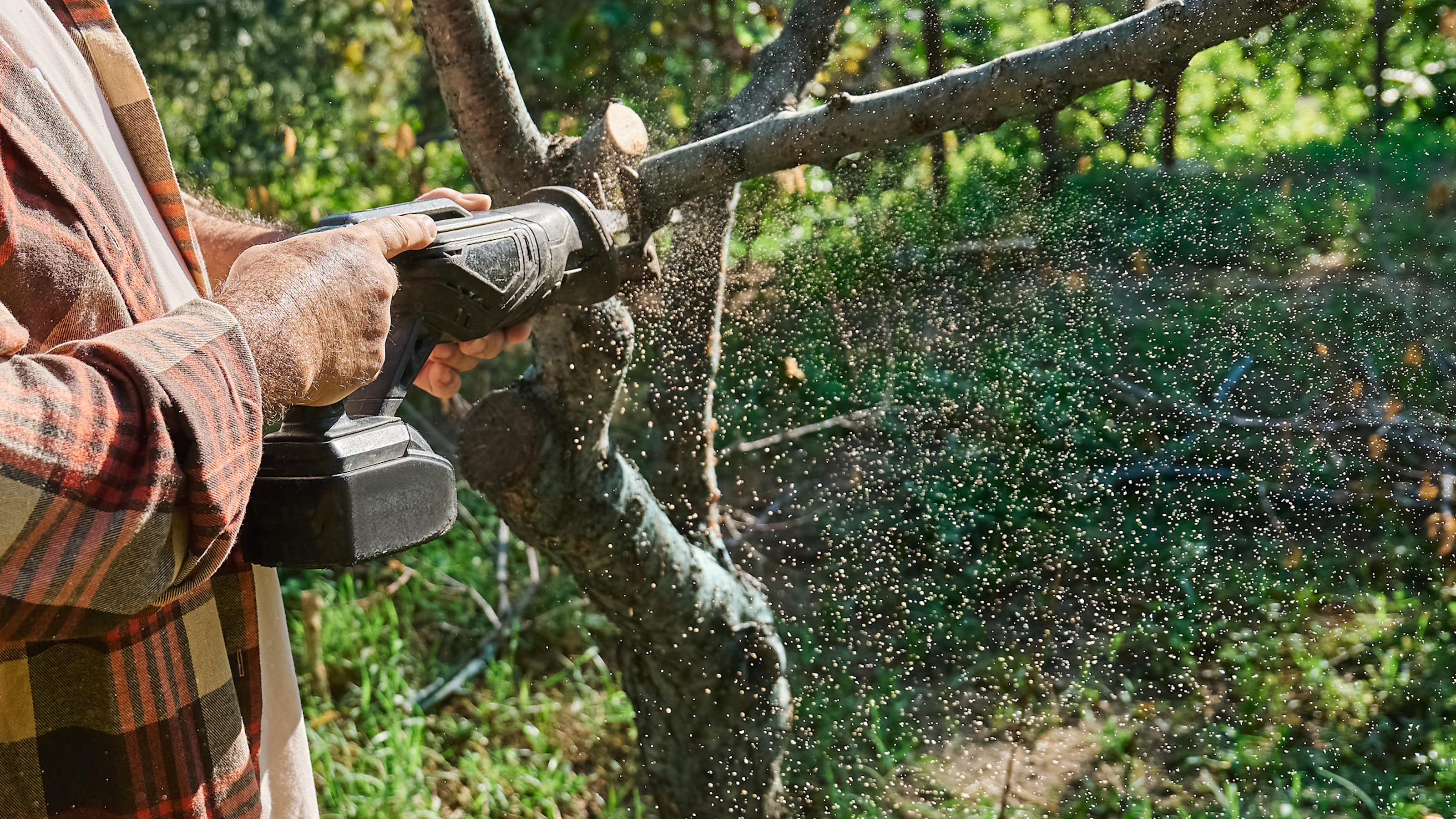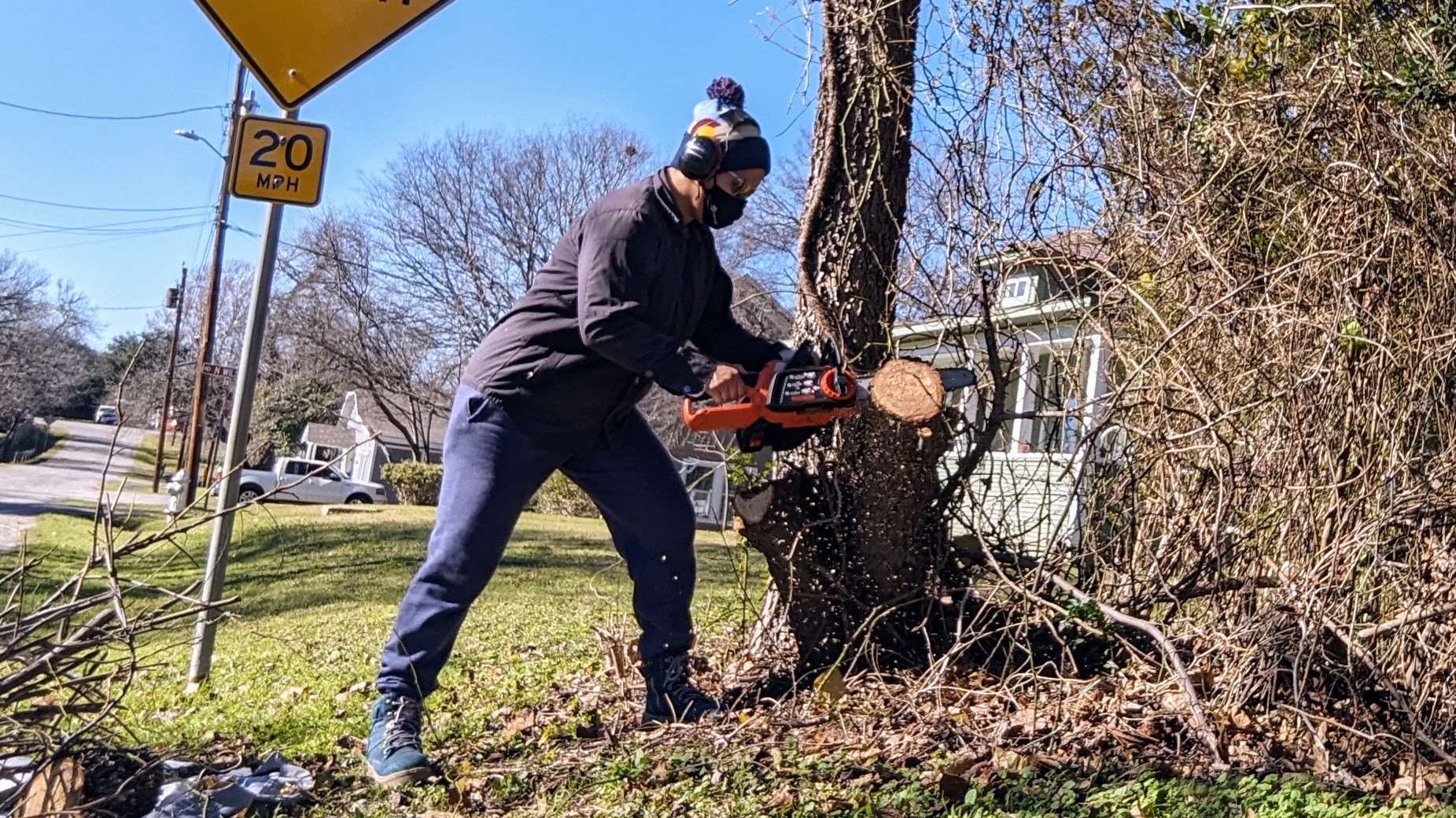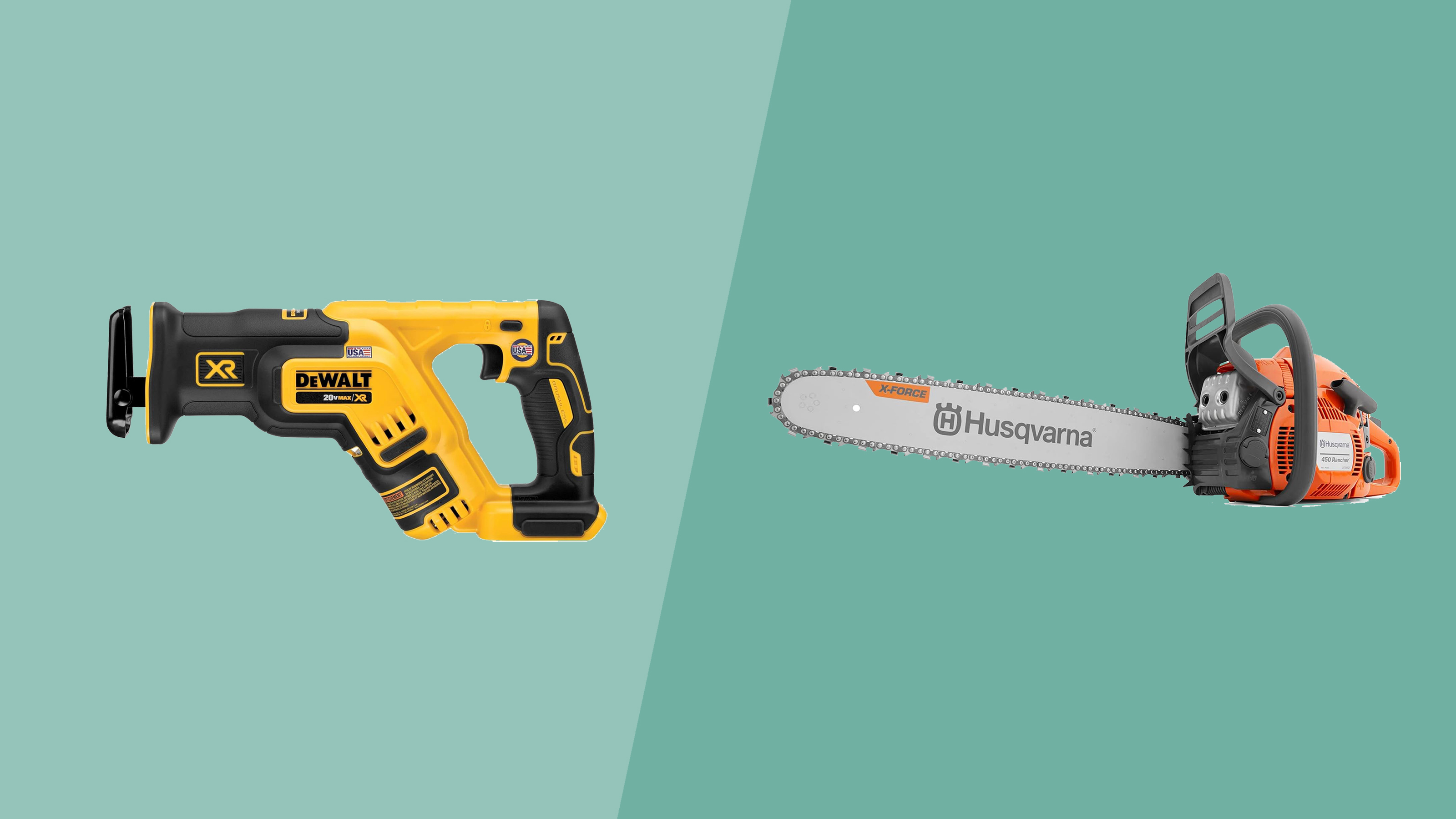Chainsaw vs. reciprocating saw: At first glance, this seems like a comparison of two totally different types of tools—one for cutting trees and the other for home improvement.
However, some gardeners now use a reciprocating saw instead of a chainsaw to prune thick tree branches and perform other tasks around the yard. I’ve written this article to clarify which yard jobs can be accomplished using a reciprocating saw – and which jobs are best left to a chainsaw.
To ensure we’re giving you the best advice, I asked landscaping and construction experts to provide their commentary on chainsaws and reciprocating saws. We’ll discuss the two tools' very different designs and how each one can be used in the yard.

Thomas Goodman has worked as a property and construction expert for MyJobQuote for six years and has worked in the construction industry for over twenty years. Thomas continues to work on building projects while providing expert construction and property advice to industry professionals and DIY enthusiasts.
Chainsaw vs reciprocating saw: Price & value
- Chainsaws are more expensive than reciprocating saws, although their specialized capabilities arguably justify this.
- For many users, a reciprocating saw will prove more versatile than a chainsaw – and therefore better value.
One of the main motivators for using a reciprocating saw in the yard instead of a chainsaw is the potential for cost savings.
Reciprocating saws are mostly used for home improvement work but also have some yard work applications. Chainsaws, meanwhile, are almost exclusively used for cutting tree limbs and timber. Using a reciprocating saw for both home improvement tasks and yard work could prove more cost-effective than buying one tool of each type.
Most consumer-grade chainsaws cost between $150 and $350, while reciprocating saws are less expensive – in the ballpark of $100 to $200. Of course, you can find budget or premium examples outside of those price ranges.
If you want a chainsaw and a reciprocating saw, you could save money by buying a cordless electric version of each tool from the same range. This will enable you to use the same lithium-ion battery and charger for both tools, so your up-front costs will be relatively low.

Chainsaw vs reciprocating saw: Features & functions
- Chainsaws and reciprocating saws usually have a focused range of functions and features. Both are uniquely effective at their intended work.
- Reciprocating saws are more versatile than chainsaws. They can be used for building projects, home improvement, and yard work.
Chainsaws and reciprocating saws' design and cutting capabilities make them suitable for a variety of domestic yard care tasks.
Chainsaws can handle heavier cutting work than a reciprocating saw, such as severing thick tree limbs and cutting down mature trees.
Meanwhile, reciprocating saws offer easier control and (potentially) improved accuracy for lighter-duty work, such as pruning reasonably slim tree limbs and cutting up firewood logs to make kindling.

Denis McCausland is a landscaper in the Denver metro area with a BS in Horticulture from Ohio State University, currently working for DenverLandscapingLynx.com.
“A reciprocating saw is ideal for light pruning work, as it is lighter and more manageable than a chainsaw when you need precise cuts,” says Denis McCausland, a Professional Landscaper at Landscaping Lynx.
“You’re also less likely to encounter dangerous kickback with a reciprocating saw than you are with a chainsaw, a type of tool that can be especially dangerous,” he adds.
Whether you choose a chainsaw or a reciprocating saw, you’re not likely to discover many fancy extra features. Both tools have a simple cutting action that they should perform uniquely well.
That said, I’d recommend looking for features that will help make it easy to maintain the tool. A tool-free chain-tensioning mechanism in a chainsaw or a tool-free blade-loading feature on a reciprocating saw will make important routine maintenance easier, so you’ll be more likely to do it.
The cutting capacity of these saws is defined by bar length (in a chainsaw) or blade length (reciprocating saw). If you know the maximum width of the objects you will cut, choose a tool with a cutting capacity to suit.
| Chainsaw | Reciprocating saw |
|---|---|
| Felling trees | Pruning branches |
| Trimming branches | Cutting up roots |
| Shortening tree limbs | Felling saplings |
| Cutting up firewood | Building projects |
| Row 4 - Cell 0 | Cutting logs into kindling |

Chainsaw vs reciprocating saw: Performance
- Chainsaws are uniquely powerful for cutting thick objects, such as large tree limbs, partly because their bar-and-chain design accommodates a wide cutting width.
- Reciprocating saws also cut powerfully but with a narrower cutting width. A reciprocating saw's lower power and smaller form factor could be advantageous regarding control and maneuverability.
According to Thomas, the relatively compact design of a reciprocating saw makes these tools better suited than chainsaws to working in confined spaces.
“Because the blade moves back and forth, it can be used in tight or awkward spaces, and the tool’s light weight makes it more maneuverable and easier to handle,” he says.
“Cordless models are particularly useful for outside work as you don’t need a long electrical cable or extension lead.”
“Where precision rather than brute force is needed, a reciprocating saw is best and allows more control over what you are cutting,” he adds.
When the going gets tougher, the greater power of a chainsaw becomes indispensable.
“For jobs that require brute strength over precision, a chainsaw is a better choice and will make fast work of most wood-cutting tasks,” says Thomas.
Proper safety precautions are essential when using a chainsaw or a reciprocating saw in your yard. Wear PPE, including goggles and a good pair of safety gloves, follow the manufacturer’s instructions, and don’t attempt a task if you’re not fully trained to do it.
Chainsaw vs reciprocating saw: what the experts say
Chainsaws and reciprocating saws are two different types of power saws. Both can be used for certain yard work tasks, but they have different sawing actions and specialties.
A chainsaw is a power tool that cuts material—usually wood—with a revolving chain of sharp-edged links running around an elliptically shaped guide bar. A traditional choice for heavy work on trees, chainsaws are unbeatable at cutting through thick branches or tree trunks. Some skilled users also use this type of tool to cut firewood or even for wood sculpting.
“A typical task for a chainsaw is cutting down trees, which is a task that suits the tool’s powerful and heavy-duty nature,” says MyJobQuote Construction Expert Thomas Goodman.
“The long guide bar and rotating chain with sharp teeth make light work of even large trees, branches, and logs. Clearing areas of woodland, trimming large branches, or cutting firewood are typical uses for this powerful saw,” he adds.
A reciprocating saw is another type of power tool, most often used for home improvement tasks such as cutting into plaster or woodwork. However, some folks also use their reciprocating saw in the yard – particularly for cutting branches too thick to cut with their best pruning shears. Reciprocating saws are named for their push-and-pull cutting action – each plunge forward is reciprocated by a backward motion.
“Due to the versatility of the reciprocating saw, it can be used to cut through various materials, including wood, plastic, metal, plaster, and plasterboard,” says Thomas.
“This means it can be used for a range of outdoor tasks. Changing the blade according to your cutting material makes a reciprocating saw ideal for most DIY, gardening, or renovation work.”
There are important differences between chainsaws and reciprocating saws regarding features, quality, and type. For instance, you can get a small, one-handed type of chainsaw called a pruning saw (such as the DEWALT 20V MAX Pruning Chainsaw: $129.99, Amazon) for lighter arboricultural work.

Chainsaw vs. reciprocating saw: which is better?
Which tool should you choose for your yard projects: a reciprocating saw or a chainsaw? Well, that depends on the cutting work you intend to do.
Chainsaws remain the tool of choice for heavy-duty wood-cutting. They can cut tree limbs and branches that are even wider than the length of their bar.
A reciprocating saw will have a narrower cutting width than a chainsaw, which rules out cutting down large trees. However, this type of tool might be a better fit for some users focused on ‘middleweight’ tasks like cutting down saplings, removing tree limbs, and preparing firewood.
Ultimately, chainsaws and reciprocating saws are both serious power tools that require respect, and they can’t be used safely in every situation.
“Properly operating a chainsaw or a reciprocating saw requires both hands – so neither tool should be used while on a ladder,” Denis notes.
“If you need to prune branches high up in a tree, use a pole saw or call a certified arborist.”
Meanwhile, if you have lighter pruning tasks ahead of you, then using an anvil pruner or bypass pruner will be more appropriate and far safer.

